|
|
Technichal Data
 Article & Data
Article & Data
|
|

Technical Data
Article ,Technical Information of Polyethylene
In this section you can find technical information & Article About Polyethylene Industrial & Application of Polyethylene products in our around.
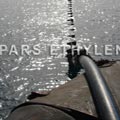
Polyethylene pipe at sea depends on the type of sewage and its volume, in most cases, sewage is unpressurised and driven by gravity. Polyethylene pipe at sea in buildings mainly consists of PVC and U-PVC (polyka) pipes, and in the past, Cast iron pipes have been used, which are not used today. Of course, there are many innovations in sewage pipe industry, and Push fit pipes and multi- layer pipes are marketed, that all of them are known as sewage pipes. Double-wall polyethylene Corrugate pipe is also used for transfer of sewage and surface water in sewage transfer lines, Double-wall polyethylene Corrugate from size of 200- 1000 mm is most used type of sewage pipe in the world, In between, 200 and 250 pipes have highest demand
READ MORE

Sewer pipe depends on the type of sewage and its volume, in most cases, sewage is unpressurised and driven by gravity. Sewer pipe in buildings mainly consists of PVC and U-PVC (polyka) pipes, and in the past, Cast iron pipes have been used, which are not used today. Of course, there are many innovations in sewage pipe industry, and Push fit pipes and multi- layer pipes are marketed, that all of them are known as sewage pipes. Double-wall polyethylene Corrugate pipe is also used for transfer of sewage and surface water in sewage transfer lines, Double-wall polyethylene Corrugate from size of 200- 1000 mm is most used type of sewage pipe in the world, In between, 200 and 250 pipes have highest demand
READ MORE

What is pipe? Each hollow cylinder can be called a pipe, but any hollow cylinder is pipe? Theoretically, following definition can be used for pipe: pipe is a hollow cylindrical pipe which is used for transfer or store of liquids, gases, and fluid substances. Pipe has been one of the best and most important inventions of humans, which has developed throughout history. pipes can be made from various materials such as iron (cast iron, galvanized sheet metal), steel, polyethylene and all types of plastics, glass, concrete and cement, etc. (and many other materials).
Pipe industry never ceases, and it only turns into from one form to another form, and development of this strategic product will continue. Production of all kinds of pipes varies according to gender and applications. Polyethylene pipes and metal pipes, and after that, the PVC pipe, is most used. Pipes are available in a wide range of sizes. It's not unusual at all that we have pipe with size of 1.2 inch and 66 inch high.
READ MORE
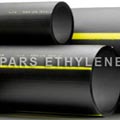
Gas pipe as an element of infrastructure and urban and rural facilities have great importance. In urban and rural communities and wherever human live, presence of gas is one of the development pillars and progress of that society. Gas distribution is carried out in areas by gas special pipelines, which must have special specifications and comply with certain standards.
We have relatively stable conditions in selecting of gas pipelines, and choice of the pipe is different from internal gas pressure and pipe size. In main gas pipelines use carbon steel pipes, and in urban and rural divisions, and branches of consumption, Polyethylene pipes are best choice for best type of gas pipe.
READ MORE
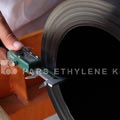
Safety factor (SF) can be 1 (1.25), 1.6 or 2. Safety factor is indicator of ensure from life span of polyethylene pipe. By increasing of SF, resistance of polyethylene pipe increases at pressures above specified limit. SF of polyethylene pipe is one of characteristics that is presented in the specification table. SF of polyethylene pipe Which is presented in the national standard of Iran, as well as the German DIN standard and all the standards of the PE pipe in the world, is indicator of ensure from life span of polyethylene pipe.
READ MORE
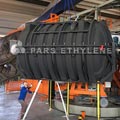
Rotational molding , are remaining material from polyethylene materials during production, inappropriate production in production and garbage of citizens. Any product made of polyethylene materials, have wastes during generation. At start of production, products may have poor quality, and this products are wastes. In production, are trying to minimize amount of waste to the lowest possible limit, and generation of waste is a natural occurrence. In this section, we focus on the issue of reusing rotational molding and polyethylene pipe waste.
READ MORE
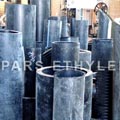
Polyethylene waste , are remaining material from polyethylene materials during production, inappropriate production in production and garbage of citizens. Any product made of polyethylene materials, have wastes during generation. At start of production, products may have poor quality, and this products are wastes. In production, are trying to minimize amount of waste to the lowest possible limit, and generation of waste is a natural occurrence. In this section, we focus on the issue of reusing polyethylene waste and polyethylene pipe waste.
READ MORE

Raw material for corrugate two- wall polyethylene pipe of Pars Ethylene Kish is from Natural Polyethylene or White Polyethylene. These pipes are double-layered, and both layers are from polyethylene materials, and should be base materials of their polyethylene from polyethylene material and with completely homogeneous formulation, and this coordination in detail is due to the fact that layers of the corrugate pipe are produced in two separate extruders, and finally, in corrugator section, pipe line is welded together. Polythene materials must be homogeneous for reliable and strong fusion points. For example, cannot be used for outer layer from natural polyethylene material of Maroon factory and for the inner layer from white polyethylene material factory Shazand, and both polyethylene materials must be from a factory and with similar formulation.
READ MORE

Sewage Manhole ! Every time we talk about the manhole, everyone thinks about the sewage, because first and greatest application of manholes is in sewage system, but use of manholes is not only in sewage system, and in all underground channels that we want to access, Manhole is mandatory.
When we talk about sewage system and its associated systems and sewage network equipment, we have to think quickly about its durability and its longevity, and its resistance to sewage, and next issue is the type of sewage, and suspended solids in sewage must be specified.
READ MORE

Application of polyethylene fittings are extensive , like polyethylene pipe. Polyethylene fittings are used in all applications of polyethylene pipes and all polyethylene pipelines. Use from polyethylene fittings depends more on the type of line and type of project, For example, flange fittings cannot be used in gas pipelines, or from electrofusion fittings cannot be used in water transmission lines, and use from them is wasting of financial resources.
READ MORE
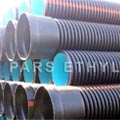
Technical specifications and quality of double wall corrugated pipes must be in conformity with DIN 16961-2 standard (relevant to dimensional control and ring stiffness of the pipe) and EN13476 (other tests regarding the quality specifications of the product). New generation of corrugated pipes of Pars Ethylene Kish are produced in conformity with all strict standards of the standard institute of Iran and Germany and in accordance with the regulations and technical standards relevant to water and wastewater management and general technical approval no. of Biotechnical - DIBT institute in Berlin DIBt Z 42.1-390. The international standard insists on production of corrugated pipes with mechanical resistance of 16 to 31.5 Newton per meters squared. In Iran, corrugated pipes must have a mechanical resistance of 31.5 newton per meters squared.
READ MORE
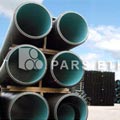
Pars Ethylene Kish has come up with a unique innovation in production of corrugated pipe (double wall corrugated pipe) and has been able to incorporate the most recent technology of the world in production of double wall corrugated pipe. The machinery used for production of double wall corrugated pipe in Pars Ethylene Kish are all made by Drossbach Maschinenbau GmbH of Germany and the production line (namely the suction machine, materials’ silo, gravimetric, extruder, corrugator, cooling tank, hauling machine, saw and other side equipment of the production line) are entirely made of German machinery.
READ MORE

Pars Ethylene Kish after doing lots of research and building on the knowledge of the managers and the research and development unit has managed to make a significant difference (innovative and creative) in production of double wall corrugated pipes, corrugator dies which has yielded to pipes with more resistance, higher quality and longer lifetime compared to the other samples in the country.
READ MORE
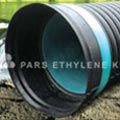
Pars Ethylene Kish has come up with a unique innovation in production of corrugated pipe (double wall corrugated pipe) and has been able to incorporate the most recent technology of the world in production of double wall corrugated pipe. The machinery used for production of double wall corrugated pipe in Pars Ethylene Kish are all made by Drossbach Maschinenbau GmbH of Germany and the production line (namely the suction machine, materials’ silo, gravimetric, extruder, corrugator, cooling tank, hauling machine, saw and other side equipment of the production line) are entirely made of German machinery.
READ MORE

Producing polyethylene fittings is a bit harder than producing polyethylene pipes and requires different welding equipment and machinery for manufacturing the polyethylene fittings and also the operators of the welding machines need to be trained and skilled in manufacturing of all kinds of polyethylene fittings.
The production of polyethylene fittings consists of a simple, time consuming but precise process. The polyethylene pipe which is produced before and is of high quality in and conformity with the required standards are selected and cut into required pieces using special saws and if any angles are required at the top of the pipes, they have to be created by the saws.
READ MORE
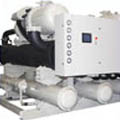
HVAC Applications is one of the chapters in the Plastics Pipe Institute’s PPI Handbook of Polyethylene Piping. Other topics to be addressed in the handbook will include design of polyethylene piping systems, joining procedures, engineering properties, directional drilling and a variety of related information.The PPI Handbook of Polyethylene Piping is being produced by the Municipal and Industrial (M&I) Division of PPI. M&I membership consists of major North American manufacturers of polyethylene (PE) pipe and fittings, PE piping materials, machinery, and equipment used for joining and installing PE piping, related test laboratories, and professional organizations.
READ MORE
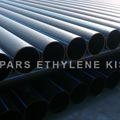
The polyethylene pipes were being produced with pipe grade polyethylene which is known as PE 100 , PE 80 and PE 63 and supplied to the market, the only difference was in density and concentration. Nowadays, with the developments in the technology and higher standards only the PE 100 grade is remaining and the other grades have been put out of the production cycle.
READ MORE
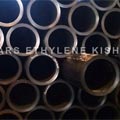
PE 80 materials, as its name suggests, have less density than PE100 polyethylene materials and therefore, PE 80 polyethylene pipes are both heavier and thicker.
According to the standards, PE 80 polyethylene materials are currently used most in production of corrugated double wall pipes and some of the manufacturers of polyethylene pipes still use PE 80 grade materials for production of huge sized and under pressure pipes which is a mistake and in both long term and short term will sustain a loss to the consumers.
READ MORE
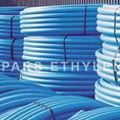
MDPE pipe is used for cold water mains into new builds and to replace old lead water supplies into both domestic and commercial properties.
Medium Density Polyethylene as it is fully known, (or blue poly as it is regularly called in merchants) is a durable, seamless pipe suitable for delivering high pressure mains water from the main run, into properties and can be used for replacing existing lead water main pipes.
READ MORE
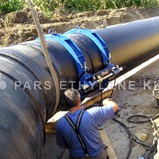
The method of repairing damaged PE pipe depends upon the degree of damage sustained. Localised damage may be repaired by use of an electrofusion saddle or clamp fixed around the damaged area. Such a repair may not be suitable where gas or other flammable fluid is present in the pipe, due to the heat generated in the fusion process. PE encapsulation techniques have recently been developed and may be suitable for localised repairs. Information on these techniques can be obtained from the pipe manufacturers.
READ MORE
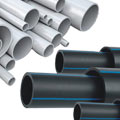
The differences between PVC and HDPE lie both in the applications for each and their composition. While PVC is the more common of the two, high density polyethylene is used in specific circumstances that make polyvinyl chloride unattractive or unsuitable. PVC is a relatively inexpensive and fairly durable vinyl polymer. High density polyethylene is a thermoplastic made from petroleum. Both PVC and HDPE are considered plastics.
READ MORE
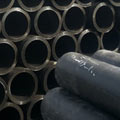
The best brand of polyethylene pipe is a polyethylene pipe which has full information about the whole pipe manufacturing process, as well as full confidence of the raw material used in it. The best brand of polyethylene pipe should have a series of features. The pipe must have a standard mark and the pipe should have been manufactured in accordance with 14427-2INSO standard.
READ MORE
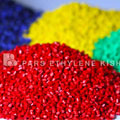
If we want to describe the PE100, PE80, and PE63 polyethylene grades in a simple and general sentence we should know that the PE63 means that the intended polyethylene pipe is capable of tolerating water transfer at a temperature of 20 ° C under pressure of 63*10^5 Pascal, that is 63 atmospheres for 50 years. Or when we say that the PE80, we mean that the intended polyethylene pipe is capable of tolerating water transfer at 20 degrees Celsius under pressure of 80 atmospheres for 50 years, and the same for PE100.
READ MORE

HDPE and LDPE are two common elements of polyethylene. As we know there are several types of polyethylene; these two types of polyethylene have a special position and have many applications in the industry.
The molecular structures in various types of polyethylene, as well as in heavy HDPE polyethylene and light LDPE polyethylene, affect their behavior. By decreasing the branching of polymeric chains and molecular mass in them, the crystallinity of these polyethylene increases, and density and crystallinity are also directly related.
READ MORE
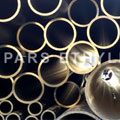
HDPE pipe is simply a pipe made of polyethylene; this material gives the pipes some special features which creates benefits and these advantages have led to the popularity of polyethylene pipes.
HDPE pipes have many advantages, high quality, reliability of pipe and fittings, ease of loading and transportation of pipes and fittings of polyethylene due to their relatively low weight, quick and easy installation have made polyethylene types the best choice for various projects.
READ MORE

Polyethylene pipes are capable of transporting drinking water, sewage, chemicals, slurries and hazardous wastes and gases. Nowadays, the use of HDPE pipes in the water supply networks is growing and managers of executive projects use polyethylene pipes instead of other types of pipes in most cases. The strength and durability and ease of installation of polyethylene pipes and polyethylene Fittings have are effective in this decision making by executives.
READ MORE

Polyethylene is a kind of thermoplastic polymers, which means that it turns into liquid by reaching its melting point and turns into solid by reaching its freezing point. Polyethylene is a chemical synthesis of ethylene, usually made up of a mixture of crude oil and natural gas. Polyethylene is widely used in the production of all kinds of plastic accessories used in the kitchen and food industries.
READ MORE
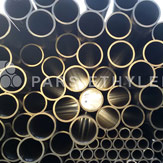
Polyethylene pipes ( HDPE Pipes) are produced at different work pressures (PN), and this work pressure (PN) is tolerable for pipes at temperatures of 20 °C. This temperature is best for polyethylene pipes. Various types of pipes have different PN grades and also different wall thickness, which is why the strength, power and flexibility of pipes are varied. Hence, the higher the PN, the greater the thickness of polyethylene pipe....
READ MORE
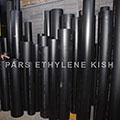
In 1958, the global polyethylene production reached 17,000 tons a year and in 1962 it reached 200,000 tons per year, and various licensed polyethylene production at low temperatures and low pressures was granted in nineteen different locations in Europe and seventeen in the United States and Japan. At present, around 28 million tons of polyethylene are produced annually in the world, of which about 4 million tons are used to produce various types of polyethylene pipes.
READ MORE
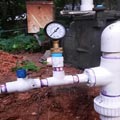
Polymeric products are routinely used in pressure-containing applications in numerous technology areas such as gas and fluid transfer, automotive applications, and consumer and industrial products. These materials can be in the form of tubing, pipe, and vessels of small or large sizes.
READ MORE

Pars Ethylene Kish polyethylene manholes are produced by the largest and most modern rotational molding machines, Pars Ethylene Kish is the first and the largest industrial unit in the field of designing, producing and manufacturing standard polyethylene manholes in the country. The company, with the help of experienced staff in the polyethylene industry,...
READ MORE

The hydrostatic test of the polyethylene pipe is performed to verify the strength of the product against hydrostatic pressures. Hydrostatic test on the polyethylene pipelines at the site as well as on samples of pipes produced in a laboratory. Hydrostatic testing is often required after and repairs to ensure the correct operation of the equipment after restart.....
READ MORE
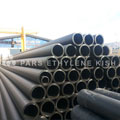
Due to the limited production of polyethylene pipes in terms of work pressure, diameter, accessories, fitting type and production capacity, it is necessary to identify these constraints and comply with the requirements of the design through making contacts with the manufacturers and before making the final pipe selection.
READ MORE

This guide contains important tips for transporting, storing and installing double-wall pipes. Although this guide has been adopted from existing standards, it is only for guidance and does not replace the standards for pipe installation. The information and application of standards are required for the use of these pipes, and the information provided in this guide is only general information that is very common for experts in this field.
READ MORE
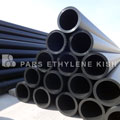
If the storage location is flat and level, the coils of polyethylene pipes can be placed to a total height of about 1.5 meters on each other. Limit the height to about one meter for surfaces that are not perfectly leveled.
Depending on the environmental conditions and the storage time of the pipes, the arrangement will vary...
READ MORE
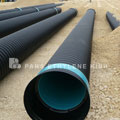
Polyethylene pipe, Polyethylene fittings and Polyethylene manhole have many applications in construction projects such as water transfer, sewage, irrigation and drainage networks, storm water collection, bridges construction. In the sewage, irrigation and drainage networks, double wall corrugated pipes and spirals pipe have the following advantages
READ MORE
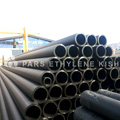
SDR stands for Standard Dimension Ratio. SDR is the ratio of the outer diameter to the thickness of the PE pipe, which is one of the characteristics of the Polyethylene pipe, and the pipes can be sorted according to the standard tables accordingly. The SDR value of Polyethylene Pipe is the main factor in determining the resistance of the pipe against the forces during installation and work pressure.
READ MORE
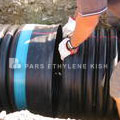
Pars Ethylene Kish’s corrugated pipes have pre-fabricated couplers at their ends and their connection is performed from one side. For connection, the pipe end (male) and the inside of the coupler (female) must be cleaned and then the appropriate gasket should be placed on the pipe end and then lubricated with soap or other materials.
READ MORE
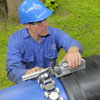
TWI of the UK has developed a new inspection system that can detect fl aws in electrofusion and butt fusion joints in polyethylene (PE) pipes...
READ MORE
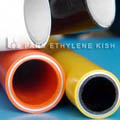
R.M. Guedes
INEGI - Mecânica Experimental e Novos Materiais, Faculdade de Engenharia, Universidade do Porto, Rua Dr. Roberto Frias s/n, 4200-465 Porto, Portugal.
This paper analyzes the effect of the polymer matrix non-viscoelastic behaviour in the mechanical behaviour of...
READ MORE
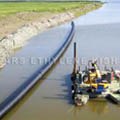
untreated wastewater from the town of Petrodvorets is one of the major pollution point sources of pollution entering the Baltic sea. the nutrients, phosphorus and nitrogen are contributing to the destructive impact on the aquatic environment...
READ MORE
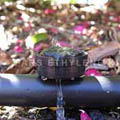
Potable water disinfection by chlorine or chlorine dioxide can negatively affect the longevity of plastic pipes. In this paper failure in the plastic pipes for potable water transfer and impact of failure and affects of oxidation or mechanical factors that cause or spread the failure of these pipes are investigated...
READ MORE
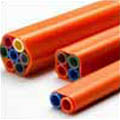
With its high performance characteristics, c rush strength, bending radius and superior pulling ability, High Density Polyethylene (HDPE) conduit is the right choice for buried cable...
READ MORE
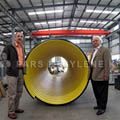
NEWARK, NJ – While many cities and towns find pipe made from high density polyethylene (HDPE) to be highly cost effective, an area in Newark, New Jersey also needed the pipe’s superior ability to stand up to extremely harsh environments...
READ MORE
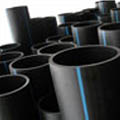
High density polyethylene pipe (HDPE) can carry potable water, wastewater, slurries, chemicals, hazardeous wastes, and compressed gases. In fact, polyethylene pipe has a long and distinguished history of service to the gas, oil, mining and other industries. It has the lowest repair frequency per mile of pipe per year compared ...
READ MORE
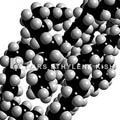
This plastic came to the fore during the World War II years, first as an underwater cable coating, then as a critical insulating material for such vital military applications as radar cable. It was not until the end of the war that the plastic was taken off allocation and freed for consumer use ....
READ MORE
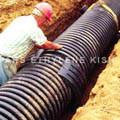
Pe pipe have the several option for connection. The connection method is selected according to the place and condition where the pipe will operate...
READ MORE
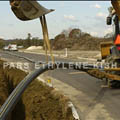
Polyethylene Pipe (PE pipe) has been used to transport fluids For nearly 50 years. Its ability to withstand harsh chemicals without corrosion and leak as well as the tight installation, polyethylene (PE) has been regarded as the ideal material ...
READ MORE
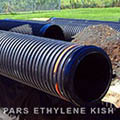
Polyethylene (PE) pipe manufacture commenced in Australia in the 1950′s with small diameter pipes used for rural, irrigation and industrial applications...
READ MORE
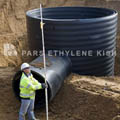
polyethylene pipe (HDPE Pipe) delivers exceptional value, unwavering reliability and remarkable advantages over conventional types of piping. It’s today's right choice for water, drainage, fuel gas, conduit and plumbing & heating...
READ MORE

Polyethylene Pipe (PE Pipe or HDPE Pipe) is made from ethylene, which can be derived from either crude oil or natural gas. PE pipe (polyethylene Pipe) is extremely strong, durable, flexible, corrosion free and chemical resistant...
READ MORE
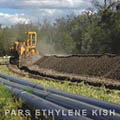
Since their introduction 50 years ago, plastics have become the pipeline materials of choice for today’s water industry, rapidly taking over the ductile iron and other traditional options. In this article, we look into the reasons of this success ...
READ MORE

With the current tough economic climate and challenging 2010-15 price settlement, water companies and contractors are under increased pressure to find opportunities to lower pipeline costs, which form a major part of their capital expenditure...
READ MORE
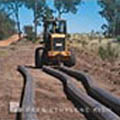
Polyethylene gas pipe systems are specifically engineered and certified for use underground outside of buildings...
READ MORE

Polyethylene (PE) has long been recognized as an engineering plastic that exhibits a high degree of inertness, making it attractive for use in markets such as food and beverage, laboratories, and chemical processing where leaching or permeability would present risks...
READ MORE

PLASTIC pipes such as PVC pipes are in widespread use in a number of industries, ranging from residential plumbing to complex water treatment systems...
READ MORE
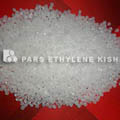
High density polyethylene (HDPE) or polyethylene high-density (PEHD) is a polyethylene thermoplastic made from petroleum ...
READ MORE
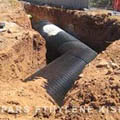
PE pipe (polyethylene pipe) enables the world’s underground infrastructure to have a backbone that is cost-effective, strong, durable, long lasting, easy to install and secure
READ MORE

Plastic pipes in residential plumbing provides many benefits over pipes made of copper, bronze, or galvanized iron. Lead pipes, the most common choice in past decades have been completely discontinued due to the health hazards of ingesting lead
READ MORE
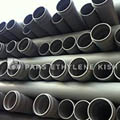
The physical, chemical and mechanical properties of UPVC pipes and fitting demonstrate their superiority in utility and applications over conventional system.
READ MORE
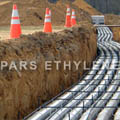
Underground PE Pipe is a cost effective alternative to clay pipes, its robustness means less breakage and no special tools are required for the cutting of the PE Pipes.
READ MORE
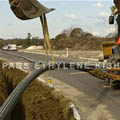
Underground pipes are made of polyethylene. These pipes are produced in variety types, which are: PE single wall, double wall Corrugated PE pipe and PE spiral pipe
READ MORE
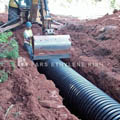
Pipe installation sould be done carefully with the adequate slope. No matter if the pipe is going to be installed inside of a structure or outside, the installation method will be the same ...
READ MORE

In recent years there have been large advances in trenchless technology for pipe installation and more can be expected in the next few years ....
READ MORE

The “Handbook of PE Pipe” was published by the Plastics Pipe Institute as a guidebook for those looking to use polyethylene pipe in any industry ....
READ MORE
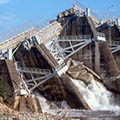
Can you imagine several weeks or even several days with¬out clean water, without sewer, or without natural gas, while severed pipelines are repaired following an earthquake?
READ MORE

The purpose of this specification is to provide standards for polyethylene (PE) line pipe suitable for use in conveying oil, gas and non-potable water in underground, above ground and reliner applications for the oil and gas producing industries
READ MORE
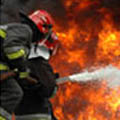
The FM Approvals certification mark is intended to verify that the products and services described will meet FM Approvals’ stated conditions of performance, safety and quality useful to the ends of property conservation
READ MORE

HDPE stands for high density polyethylene and is made from ethylene, which can be derived from either crude oil or natural gas. PE Pipe is extremely strong, durable, flexible, corrosion free and chemical resistant
READ MORE
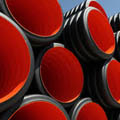
Up to 60 % of raw materials can be saved in comparison to solid walled plastic pipes.The strength of the pipes is given by the corrugated design of the outer wall and not by wall thickness, as it applies for solild wall pipes
READ MORE
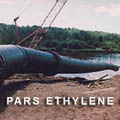
One way to look at industrial grade pipe is to consider that the pipe itself is equally as important as the material that flows through it
READ MORE
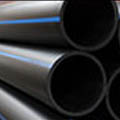
If you are looking for a piping system in Landfill applications that offer toughness, strength, flexibility, wear and chemical resistance and dealing with shifting, hot or corrosive soil conditions, you simply can not find a better product than PARSETHYLENE KISH HDPE
READ MORE
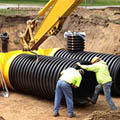
A subdrain system is an underground network of piping used to remove water from areas that collect or retain surface water or groundwater
READ MORE
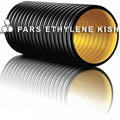
The smoth inside wall and the corrugated outside wall provides character with high stregth, low weight, corrosion resistance, long life, easy install and easy join
READ MORE
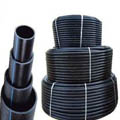
ASTM D1238 Flow Rates of Thermoplastics by Extrusion Plastomer D1505 Standard Test method for Density of Plastics by the Density- Gradient Technique
READ MORE
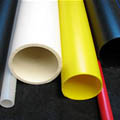
This report was developed and published with the technical help and financial support of the members of the Plastics Pipe Institute, Inc. (PPI)
READ MORE

Much of the U.S. pipe infrastructure is in poor condition and deteriorating further each year. Water and wastewater infrastructure in most areas is anywhere from 50 to 100 years old and has met or exceeded its intended life expectancy
READ MORE

Machinery of PE Double wall pipes
This method of production for double wall pipes, whose inner and outer layers are being extruded
READ MORE
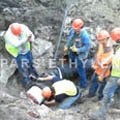
A retention/detention system is an underground pipe system that stores surface runoff. These systems are typically sized to maintain the runoff
READ MORE
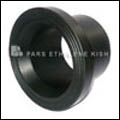
Flanges are used in piping as part of a fitting for the purpose of redirecting or changing pipes diameter. They are usually produced during the process of casting machinery components and molding.
READ MORE

Piping Dictionary ( English to Persian-PDF ) Piping Dictionary Piping Dictionary
READ MORE
|
|
|
|
|
|